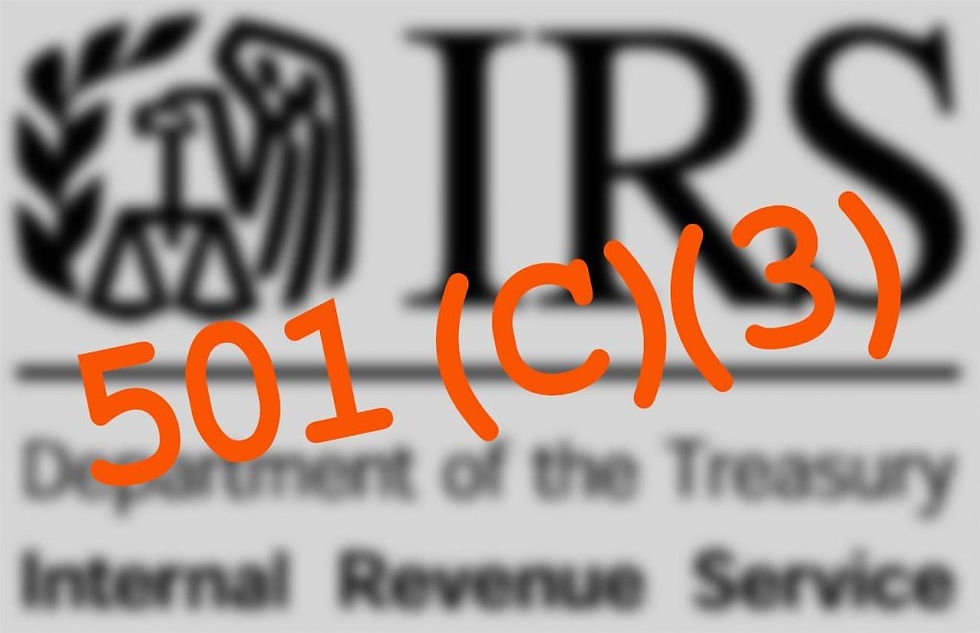E-File vs Paper Filing for 501c3: What You Need to Know
- EZ 501c3
- Sep 8, 2023
- 3 min read
The 501c3 application process is a crucial step for nonprofit organizations looking to gain tax-exempt status. The application itself can seem daunting, but choosing the right filing method between electronic and paper filing can make all the difference. While both methods can accomplish the same goal—obtaining that sought-after tax-exempt status—there are key differences in terms of speed, accuracy, and convenience.
This blog post delves deep into the pros and cons of e-file vs paper filing for 501c3 applications. From IRS regulations and mandatory forms to step-by-step comparisons, we're covering everything you need to make an informed decision.
Whether you're a new nonprofit or have years of experience, this comprehensive guide will equip you with essential information to navigate the 501c3 application process efficiently.

The Importance of 501c3 Status
Understanding the gravity of obtaining 501c3 status is crucial when embarking on the nonprofit journey. This tax-exempt status, conferred by the Internal Revenue Service (IRS), offers more than just federal tax exemption. It also often includes state tax benefits, which can significantly reduce the operational expenses of a nonprofit. State benefits can vary but often include exemption from sales, property, and income tax.
Furthermore, with a 501c3 designation, organizations can avail themselves of discounted postal rates, reducing the costs of outreach and fundraising campaigns. But the benefits extend beyond fiscal perks. This special status amplifies an organization's credibility and trustworthiness, which is crucial for fundraising and community engagement. Donors are more likely to contribute to a tax-exempt organization since their donations can be tax-deductible, enhancing their own fiscal responsibility while supporting a cause they care about.
In a crowded philanthropic landscape, a 501c3 status serves as a badge of legitimacy and compliance, setting the organization apart in the eyes of both the public and potential partners. Therefore, achieving this status should be a priority in your 501c3 application process.
Overview of the 501c3 Application Process
The 501c3 application process involves several steps, starting with a clear outline of your nonprofit's mission and goals. You will also need to prepare organizational documents such as bylaws, and financial statements projecting income and expenses. The primary form you'll be dealing with is the IRS Form 1023 or its shorter version, Form 1023-EZ. The choice between paper and electronic filing takes place when submitting this form.
E-File: Pros and Cons

Speed
One of the most attractive features of e-filing is its speed. Unlike paper filing, which may take several weeks to process, e-filing allows the IRS to receive your application almost instantaneously.
Accuracy
E-filing reduces the risk of errors. The electronic forms often have built-in validations that help you avoid common mistakes. Additionally, you get instant confirmation of submission, so there’s no guesswork involved.
Environmental-Friendly
Digital applications save paper, contributing to an eco-friendly 501c3 application process.
Costs
E-filing may require a nominal fee, but this is usually offset by the advantages of quicker processing and fewer errors.
Paper Filing: Pros and Cons
Flexibility
Some organizations prefer the tactile process of filling out forms by hand, as it allows for more customization and notations.
No Internet Requirement
Paper filing can be advantageous for those with limited or unreliable internet access.
Costs
While the costs of mailing can add up, especially if you’re sending a large application package, there's no separate fee for the filing method itself.
Time-Consuming
The time it takes for the IRS to receive, process, and reply to a paper application can be significantly longer than e-filing.

Making Your Choice
When choosing a filing method, consider the unique needs of your organization. If speed and accuracy are paramount, e-filing is your best bet. If, however, you prefer a more traditional approach and are not constrained by time, paper filing might suit you better.
It's also worth noting that some types of 501c3 applications may only be eligible for one type of filing. Always check the latest IRS guidelines to ensure you're choosing the most appropriate and available option.
Legal and Technical Requirements
Both e-file and paper filing require adherence to IRS rules and guidelines. Make sure your application is complete, accurate, and accompanied by all necessary supporting documents, regardless of the method you choose. Failure to do so can result in delays or, worse, rejection of your application.
Conclusion
The 501c3 application process is a critical journey in the life of a nonprofit, and choosing between e-file and paper filing is a decision that merits careful consideration.
While e-filing offers advantages like speed and accuracy, paper filing can provide a sense of tactile involvement and can be more accessible for those without reliable internet. Your choice should align with your organization’s needs, resources, and priorities. In either case, meticulous preparation and adherence to IRS guidelines are crucial for a successful application.
This comprehensive guide aims to serve as your roadmap in this important process, ensuring you're well-informed to make the best decision for your nonprofit’s future.



Comments